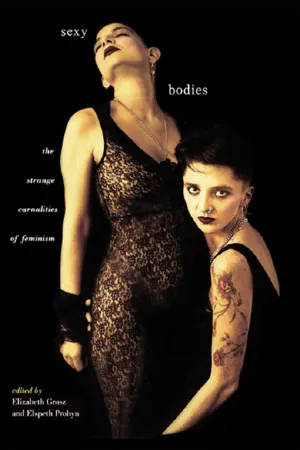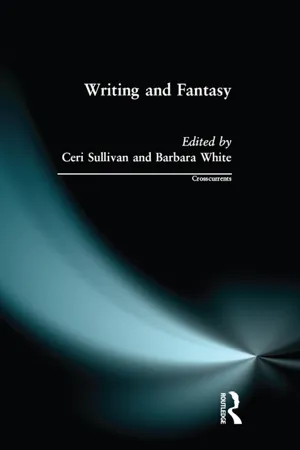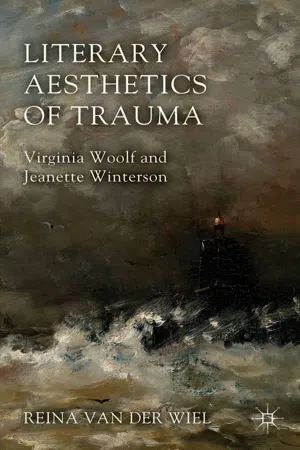Jeanette Winterson
Jeanette Winterson is a prominent British author known for her innovative and lyrical writing style. She gained widespread acclaim for her debut novel, "Oranges Are Not the Only Fruit," which explores themes of sexuality and identity. Winterson's works often blend elements of fantasy and reality, and she is celebrated for her thought-provoking storytelling and unique narrative voice.
5 Key excerpts on "Jeanette Winterson"
- eBook - ePub
Sexy Bodies
The Strange Carnalities of Feminism
- Elizabeth Grosz, Elspeth Probyn, Elizabeth Grosz, Elspeth Probyn(Authors)
- 2013(Publication Date)
- Routledge(Publisher)
...Such issues for Winterson are transcendent; her characters are engaged in the production of histories, identities and communities in ways that do not vary predictably along the lines of gender, sexual practice or historical period. This Romantic investment in the transhistorical qualities of human nature means that unlike other postmodern lesbian novelists such as Sarah Schulman, Winterson is not intervening in or attempting to correct homophobic misrepresentations of or assumptions about lesbian relationships. 5 Conflict in this fictional world is always romantic conflict; even war is primarily an opportunity for Henri to express his obsessive love for Napoleon by following him to Moscow. Thus, Winterson’s novels may be read politically, but they themselves make no explicit political argument. For all the richness of resonance with lesbian theory and fiction in her novels, then, Winterson violates their one crucial convention by refusing to engage in debates around the social and political meaning of lesbianism. The absence of an explicit engagement with these issues, of course, does not mean that these novels fail to intervene in those debates at all; simply that they do so by refusing to treat lesbianism as marginal, as an inherently more problematic or unstable construction of identity than heterosexuality, masculinity or any other category. The problem of identity, however – a staple of both theoretical and fictional lesbian writing – fascinates Winterson. The provisional and fictional status of identity is a frequent topic in The Passion. Memory plays a crucial role in constructing subjectivity. But unlike the Lockeian function of memory – to preserve consciousness through time in order to guarantee identity – the loss of memory here is what makes sense of the world 6. They say that every snowflake is different. If that were true, how could the world go on? How could we ever get up off our knees? How would we ever recover from the wonder of it? By forgetting...
- eBook - ePub
- Ceri Sullivan(Author)
- 2014(Publication Date)
- Routledge(Publisher)
...Few writers achieve this more effectively than Jeanette Winterson and Monique Wittig, both of whom, in their joint commitment to feminism and the fantastic, situate open-ended narrative structures at the core of their work. 4 To date, the attention paid by critics to Winterson’s key role as a contemporary writer of fantastic fiction has been to some extent over-shadowed by her perceived importance as a writer on alternative representations of sexuality. Rebecca O’Rourke’s reading of Oranges Are Not The Only Fruit (1985) is characteristic in this regard, in that although she pays close and detailed attention to how and why differing groups of readers experience the novel differently, her own focus for these responses rests almost exclusively upon the realist aspects of the text, its non-mimetic elements being relegated almost to the level of a single after-thought: ‘As well as telling this story, the novel has fairy tales interspersed throughout and some chapters are just [why “just”?] short reflections on topics such as history’. 5 Of course the realist elements of the novel are important, but they are absolutely not the full story. In fact, the text’s anti-conventional narrative structure reminds us continually that Oranges is, above all, a novel which actively celebrates the fantastic potential of story-telling. As the central protagonist Jeanette well knows it is in the realm of fabulation that the most transformative possibilities reside: One day I learned that Tetrahedron is a mathematical shape that can be formed by stretching an elastic band over a series of nails. But Tetrahedron is an emperor … The emperor Tetrahedron lived in a palace made absolutely from elastic bands. To the right, cunning fountains shot elastic jets, subtle as silk; to the left, ten minstrels played day and night on elastic lutes. (p. 49) Winterson is certainly not a writer of utopias in their static, perfected sense...
- eBook - ePub
Reclaiming the Sacred
The Bible in Gay and Lesbian Culture, Second Edition
- Raymond J Frontain(Author)
- 2013(Publication Date)
- Routledge(Publisher)
...Although Jeanette’s irreverent orange demon gives her pretty much the same advice, Winterson’s story converts the traditional narrative of damnation into one of salvation by two means. First, by the novel’s close, Jeanette stands not as supplicant of recognition, and thus of significance, but as recognizer of significance through her claiming of a prophetic role. Jeanette casts this partially as an act of will, reflecting that she could have been chosen to be a “priest instead of a prophet,” reciting the “old,” “known,” words that “comfort and discipline.” But she forsakes the “book with the words set out” for a self-made song of her own demons (Oranges 161). Second, her assumption of this authoritative position is fostered by the conclusion that what is conventionally regarded as outside, despised, or cast out from the authorizing text is actually inseparable from it. In other words, while the church may expel her, she finds her demons, that complex package of her identity, sexuality, and creativity, always already inside the church’s founding text, although often in buried ways. The church council’s insistence on reading Jeanette’s lesbianism as a symptom of the diseased practice of granting women power in the church offers a final hermeneutical lesson that implicitly unlocks for her both the Bible and her own sense of authorial agency. For once, her community forgoes a literal interpretation and reads “the real problem” as contradicting “the teachings of St. Paul and allowing women power in the church” (Oranges 134). The extremity of the church leaders’ misogyny following a gruelling exorcism would seem to support Hillary Hinds’ argument that Winterson wins mainstream sympathy for her lesbian character at the expense of the conservative Christians. For some readers, lesbianism in the course of the novel may indeed become “an otherness preferable to the unacceptable otherness of fundamentalism” (Hinds 164)...
- eBook - ePub
Women Talk Back to Shakespeare
Contemporary Adaptations and Appropriations
- Jo Eldridge Carney(Author)
- 2021(Publication Date)
- Routledge(Publisher)
...Winterson’s oeuvre is also deeply grounded in intertextual and adaptive practice; historical, literary, religious, and scientific allusions permeate her work. Two novels, Oranges Are Not the Only Fruit (1985) and Sexing the Cherry (1989), appropriate traditional fairy tale tropes and Weight (2005) updates the myth of Atlas and Hercules. In 2011 she wrote “Godblog,” a play based on the Book of Genesis, for Sixty Six Books, a project which commissioned works to mark the 400th anniversary of the King James Version of the Bible. In 2012 she responded to another 400th anniversary with The Daylight Gate, a novelization of the Pendle Hill witch trials of 1612. Most recently her novel Frankissstein: A Love Story (2019), a response to Mary Shelley’s Frankenstein, addresses our fears and fascination with artificial intelligence, gender fluidity, and transhumanism. Winterson herself described the creative impulse that draws her to rework previous texts: My work is full of Cover Versions. I like to take stories we think we know and record them differently. In the re-telling comes a new emphasis or bias, and the new arrangement of the key elements demands that fresh material be injected into the existing text. (Weight xiv) Although The Winter’s Tale is popular on stage, it has been subject to relatively few adaptations into other media compared to many of Shakespeare’s other plays. In 2014, the Royal Ballet of London performed a ballet based on the play by choreographer Christopher Wheeldon, and in 2017, Ryan Wigglesworth adapted it for the English National Opera. In fiction, E. K. Johnston published a well-received young adult novel in 2016, Exit, Pursued by a Bear. Winterson’s inventive retelling is a rich addition to the body of contemporary homages and challenges to Shakespeare. In The Gap of Time, Winterson’s most conspicuous “injection of fresh material” into The Winter’s Tale is the bold exposure of the play’s simmering sexual tensions and anxieties...
- eBook - ePub
Literary Aesthetics of Trauma
Virginia Woolf and Jeanette Winterson
- Reina Van der Wiel(Author)
- 2014(Publication Date)
- Palgrave Macmillan(Publisher)
...These are direct statements addressed to the reader that may be understood as symptomatic eruptions of trauma that seem to puncture the main narrative. In these passages, Winterson seemingly abandons experimental literary form – which, as this book has argued, can function as container for raw, traumatic emotions and thus facilitate symbolization – in favour of increasingly unmediated passages of traumatic realism (Rothberg, 2000) – a process that culminates in the publication of Why Be Happy When You Could Be Normal? A brief theoretical detour into Winterson’s practice of self-narration, the concept of ‘talk fiction’ and the emergence of ‘traumaculture’ in the 1990s will benefit the subsequent close readings of the novels. First-person narration: from storytelling to testimony In 1994, Winterson ‘decided that [she] won’t talk about [her life] anymore because it seems to [her] that [her] own life is entirely insignificant’ (cited in Wachtel, 1997: 63). But it is precisely her own life – her adoption experience, to be exact – that she repeatedly (re)turns to in her fiction from The.PowerBook onward. Indeed, a decade later, she declared that every work of art involves self-expression by the artist, at least partially: ‘There is always a danger that biography overshadows achievement, but that is no greater distortion than the pretence that the life and the work are completely separate’ (2005c, para. 15 of 16). This shift in outlook becomes progressively evident in Winterson’s fictional work, particularly in her use of first-person narration. First-person narration allows ambiguity and alternation between different narrating voices, both inside and outside the story...




